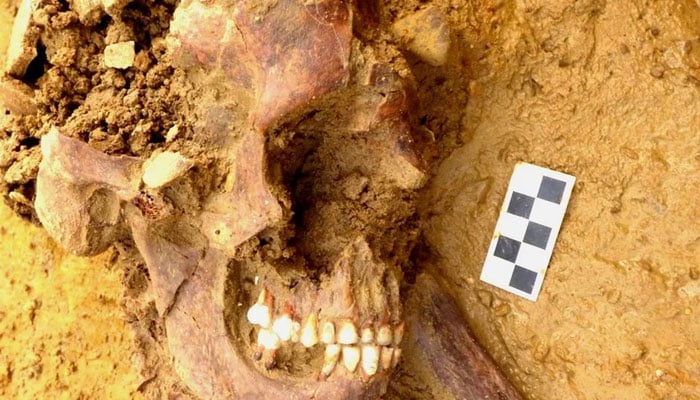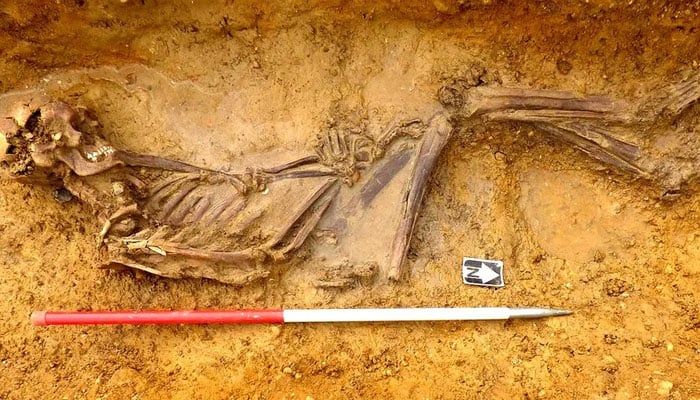A groundbreaking study that illuminates a critical juncture in Roman Britain’s history has used DNA analysis to uncover the life story of a young man who was born 2,000 years ago.
The well-preserved skeleton, known as Offord Cluny 203645, was found during road improvement excavations in Cambridgeshire. It belonged to a member of the nomadic Sarmatian group, providing the first biological proof of their presence in rural Britain.
The ancient DNA of Offord was decoded using state-of-the-art methods by researchers at the Francis Crick Institute’s Ancient Genomics Laboratory from a well-preserved inner ear bone.
Dr. Marina Silva outlined the difficulties in dealing with damaged and fragmented DNA while praising their achievement in identifying genetic differences from other Romano-British people.
The investigation followed the changes in Offord’s diet over time, showing a move from the common grains of the Sarmatian region, millets and sorghum, to the wheat of western Europe. This dietary transition, coupled with chemical analysis of teeth, confirmed Offord’s journey to Britain during his lifetime.
Professor Janet Montgomery emphasized the value of dental analysis, drawing comparisons between it and tree rings to record a person’s diet over time. Offord’s changing consumption patterns suggested migration from the Sarmatian region to Britain.

Historical accounts suggested that Offord may have been associated with the Sarmatian cavalry, which became part of the Roman army in Britain. This historical context was validated by DNA evidence, which was a significant breakthrough in our understanding of Roman Britain’s social dynamics.
Dr Alex Smith of MOLA Headland Infrastructure, leading the excavation, noted the transformative impact of DNA and chemical analysis, highlighting the increased mobility not only in urban but also in rural areas during the Roman period.







